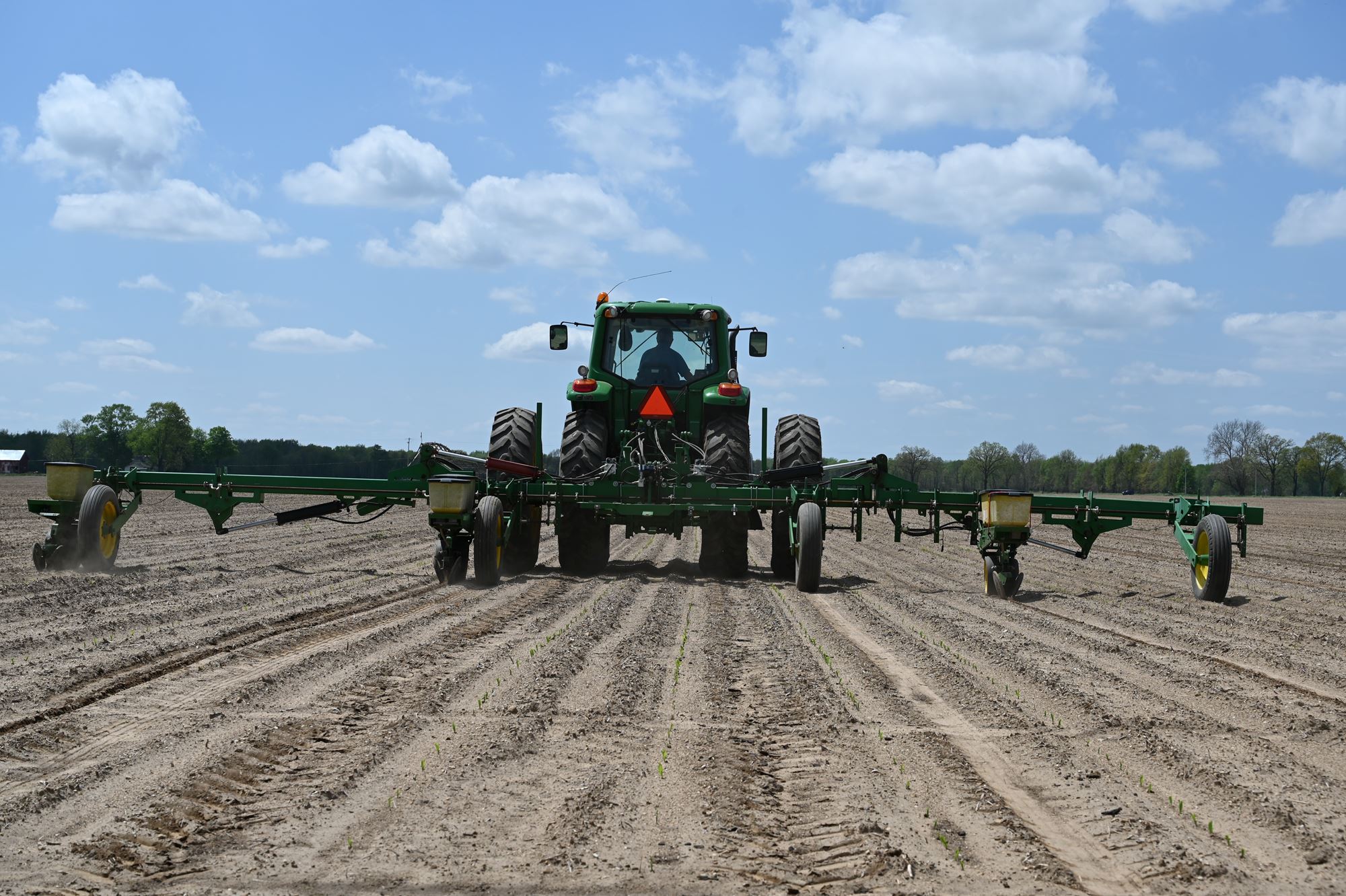

News
Low machinery inventories are increasing competition for quality equipment. The used machinery market is rapidly changing, and just as dealers are reporting high used equipment prices, the auction market is seeing similar trends.
Check out the latest auction insights in five major equipment categories and learn what steps you can take to move quickly on a deal with AgDirect® auction financing.
Auction value and volume trends
Overall, several positive and negative factors have impacted the auction market over the past two to three years. While higher commodity prices and strengthening net farm income has driven demand, supply chain issues and parts delays have contributed to depleting inventories and rapid asset accumulation.
Now with higher input costs and rising interest rates on the horizon for 2022, what will auction inventories look like and how will supply impact demand and pricing across the different asset categories?
Recent Tractor Zoom data provides a snapshot of the trends impacting row crop tractors, combines, planters, sprayers and forage equipment.
Row crop tractors
Comparing Q1 2022 to Q1 2021, row crop tractor volume at auction was down 55% despite a rebound in November and December. Producers might not be retiring at the same rate as they were the year prior, while others may be holding onto their equipment longer due to concerns of not being able to find a replacement machine.
In late 2021, row crop tractor auction values ticked up in December – a typical high volume month – then started to cool off moving into 2022. However, values have gradually accelerated and by March 2022, they were up 10% compared to the year before.
Combines
In August 2021, auction volume for combines was down, and supply dipped again significantly in December compared to 2020. During the first few months of 2022, combine auction volumes have continued to underperform indicating a tighter supply for combines than other equipment categories.
In February and March, combine auction values were up around 30% compared to the previous year. However, in 2022, combines have come onto the auction market with fewer hours than those in 2021 which helps explain the higher prices buyers might expect to see.
Planters
Because of their nuances, planters can be difficult to drill down clear data. One area that can more easily be tracked includes width of rows. In 2021, it was clear larger planters ranging from 24 to 36 rows had the most growth and were sold at auction for a premium.
More recently, volume for larger units has been fairly low, which has caused values to drop some in the absence of quality equipment available on the market. Now in 2022, 16 row planter values are growing at an accelerated pace.
Sprayers
When times are good, some producers will take advantage of their improved financial position to substitute pull-behind sprayers for self-propelled models. That certainly seemed to be the case in 2021.
Then, in Q1 of 2022, self-propelled sprayer volumes dropped significantly during their prime selling season with about 50% fewer sprayers coming onto the auction market than in Q1 2021.
Sprayer values, on the other hand, have been all over the board. Due to considerably higher hours on machines, values dropped recently in March and with supply tightening, this trend may continue.
Forage equipment
Finally, while forage equipment hasn’t been as directly influenced by strengthening commodity markets like row crop tractors and combines, Q4 2021 round baler auction values were higher than in Q4 2020 despite higher volumes.
Since then, 2022 round baler auction values have come in slightly below numbers reported in Q1 2021. However, auction volume for this equipment category is traditionally lower at the start of the year and values may shift during subsequent selling seasons with greater sales volumes.
Auction financing
In addition to monitoring auction value and volume trends, evaluating your equipment financing options can help you secure the funds you need to move quickly on a sale.
AgDirect offers competitive finance and lease options for machinery purchased through traditional and online auctions, along with the same attractive interest rates for both new and used equipment.
Producers planning to bid at an upcoming auction can benefit from a fast and simple application process that can be completed online, in person or over the phone.
Here’s how it works:
Step 1: Apply online or work with an AgDirect team member to submit an application. It’s a good idea to complete this step at least two days prior to the auction.
Step 2: A credit decision is returned to the applicant, typically within 3 business hours.
Step 3: Once approved, the applicant is free to bid at auction. AgDirect will provide an auction approval letter if proof of financing is needed.
Step 4: Bill of sale is procured.
Step 5: Lien searchers are completed on the buyer and seller to ensure the equipment is free and clear of debt or other obligations.
Step 6: An AgDirect team member provides the required financing documents.
Step 7: Documents are reviewed, electronically signed and returned to AgDirect.
Step 8: Finally, funds are disbursed for the sale.
“Unlike financing an equipment purchase at the dealership, auction financing requires the completion of a lien search, but it’s a step we handle on behalf of our customers to protect their best interests,” says Aaron McWhirter, AgDirect auction and private party representative.
“Whether you’re looking to purchase equipment through a traditional auction or online, we can help you get the financing you need before the sale so you can bid with confidence,” he says. “In cases where financing is needed after a bid has been won, we can also offer auction financing as a refinancing option for purchases made within 90 days of the sale.”
Published 5/12/2022 on AgDirect's Learning Center.



